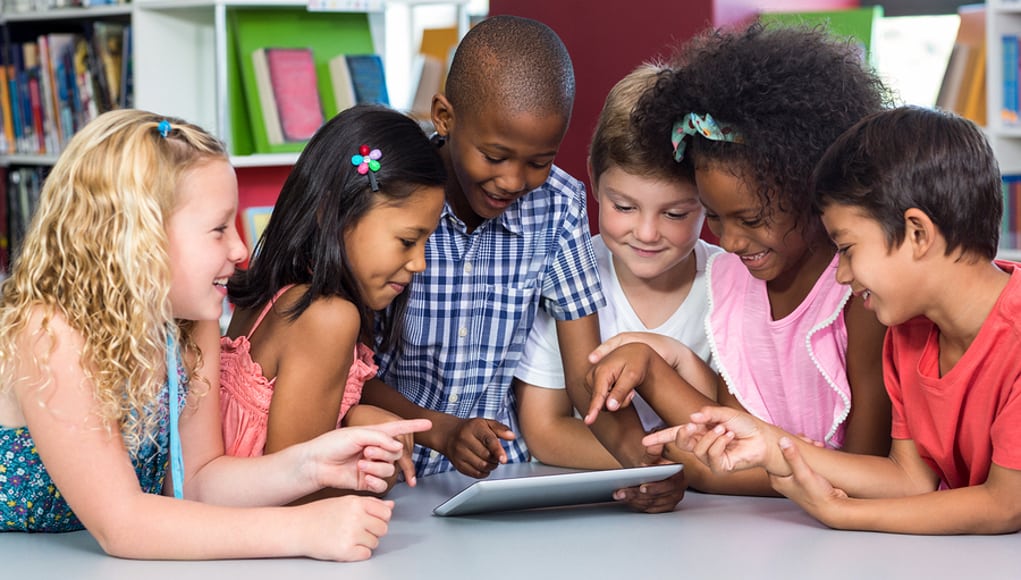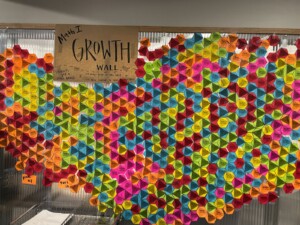Teaching Technology, Digital Literacy as Global Competencies

We hear lots of things about globalization, especially as it relates to a rapidly changing economy. When we talk about global disruptions (technology, education, artificial intelligence, climate), we are trying to, among other things, see what skills will our future workforce need. When analyzing this, researchers and futurists alike often come up with a set of global competencies. Things like adaptation, cultural competency, interdisciplinary abilities, creativity, collaboration, growth mindset, grit, and new literacy skills are consistently referenced.
We have for years worked to integrate technology into schools. Indeed, now we have more students with devices in classrooms than ever before. This has, and should, change everything. But in addition to having students edit documents in Google, design collaborative presentations, do research and use various applications, why not teach them that their technology skills and digital footprint is their window to the global society and economy?
Let’s not teach technology, or just teach our standard curriculum with technology, but rather really have students become global citizens through technology. They can use technology to not only transform themselves but the world as well. Here are some things to consider, or possibly reconsider, when we use technology in school:
Video
70% of our technology use is the consumption of video content. So with that staggering statistic in mind, what are we doing with video and our students? Are we only showing them how to consume video content? What if we also made sure they had skills in creating video content? This should not just be reserved for students in a digital media course. Rather, all students need to learn how to tell stories, especially their stories through video. They all watch YouTube, but what if they all created content for YouTube based on their learning at school? Think of it as just another version of the resume or portfolio. And it doesn’t have to be YouTube. It can be Vimeo and so on. That’s not the point. And yes we have all sorts of great applications for students of all ages to create video content (i.e. Flipgrid, Adobe Spark and others). And I’m not saying 3rd graders need a YouTube channel. But what I am saying is that we need to teach, through years of modeling, practice and public work, that telling our story in the video is a powerful technology tool and application that can positively affect our collective digital footprints and give each student a global profile that will benefit them professionally and academically.
Social Media
First and foremost, we need to educate all students about the pitfalls and dangers of negative social media use – how it can impact their future options in college and employment. But we have had campaigns for years warning students about everything from smoking to bullying to drug use to sex. And one could argue that they are often not effective enough.
We need to go further than just teaching, or preaching, about the negatives. Our job, as educators, is not only to show students what not to do but also to teach them what to do. And this is no different with social media. This is another form of literacy necessary to truly be successful in the 21st-century workplace.
Recent studies are demonstrating that college students that use and understand social media are experiencing an edge or more success than their counterparts who don’t. Students need to learn how to share their talents, skills, passions, and accomplishments with the world. In other words, their various social media profiles are their new daily resume. For those students that share their positive and professional writing, photographs, videos, music, art, business ideas, volunteer and service work and more on social media, they will have an advantage over those who don’t.
Finally, what if all high school graduates had a professional LinkedIn account, purchased a customized URL of their name and had a complete digital portfolio?
Service Learning
Participating in service projects has been a staple activity of high school students for many years, especially those applying for competitive colleges. But in a more global society, participating might not be enough. Well, thanks to technology and more, students can now not only participate in many service opportunities but also create, lead and facilitate them. Being a part of an opportunity is one thing, but creating that opportunity for others is the game-changer.
There are now many digital resources available that allow students and others to plug into global services projects on a diverse list of issues. Think about global challenges of food insecurity, climate change, water access and safety, violence, homelessness, education, poverty and health care. Not only can students access organizations locally, regionally, nationally and internationally to learn more about these issues, but there are resources designed specifically to plug them into existing projects – or better yet – even create their own. Service Learning sites such as WE, Do Something, Generation On, Sign Up Genius and Community Tool Box are just a few of the free resources that educators and students can use to connect with projects, needs, partners, resources and inspiration on how to serve others on a global scale.
Another related phenomenon, now part of a global skill set, is the concept of crowdsourcing (sourcing information, skills or even products from a group of groups of people) and crowdfunding (sourcing money or funds from a group or groups of people). This is what the big boys and girls do every day when eliciting support for their global philanthropic efforts. So now, we have students, even in elementary schools, starting their own GoFundMe, Kickstarter or Indiegogo campaigns to garner funds or other support internationally for their service projects. They can also use civic action partners to jumpstart or enhance their reach. Organizations such as the Bill and Melinda Gates Foundation, Oxfam and Unicef are just a few of the non-profits with a global reach and emphasis that our students can partner with to address a variety of global challenges.
Online Classes
Taking classes online has been more of a higher education. In K-12, they have been used in some independent study or homeschool programs. And taking an online course should not be confused with high school students doing online credit recovery. I’m talking about a complete course with an online instructor, peers, and community. Some high schools are starting to require their students to not only take a college class prior to graduating but also an online class.
Online classes, or even hybrid classes that still have some face-to-face contact, are just another way to access education. They introduce students to a whole new paradigm in terms of communication, collaboration and what it means to be truly part of a digital family or community.
Online education is not only redefining higher education but education in general. As an example, both employers, as well as jobseekers, are using various online courses and platforms (such as Lynda.com and LinkedIn Learning) to upskill and remain relevant in this ever-transforming economy. K-12 institutions are looking at how to give their students this experience as well.
Imagine if K-12 students not only took online college courses, but were given access to the thousands of open-source courses available free, many from famous higher education institutions such as HarvardX, MITX and even UC Berkeley.
Indeed, all of this is disrupting the way education is being delivered and received. California community college students can now attend Calbright College all online. Or consider new entities such as University of the People that touts itself as the “first non-profit, American-accredited, tuition-free online university dedicated to opening access to higher education globally.”
Early college experience is highly recognized now as one of the key factors in predicting college completion and success. We all need to look at expanding our students’ global education experience through online and open-source learning opportunities.
Surveys and Online Feedback
By now, many of our students are used to completing Google Forms, other online feedback applications (Survey Monkey, Poll Everywhere and so many others). But are we having our students create these forms or surveys? Are we teaching them how to design appropriate questions and potential responses for an audience or group? There is no doubt that feedback, in all digital forms, is going to dominate our global economy. We see it in every purchase or decision we make. And yes, we all have survey fatigue. That being said, there are valuable skills being learned when designing these survey tools and using them to collect and analyze data.
There may not be many constants that we can depend on the future. I imagine that change, and the impact of technology on that change, might be the only two constants we can guarantee. But instead of looking at this as a global glass half empty, we may want to create the opportunities necessary with technology to have our students be globally competent, collaborative, creative and committed.
For more, see:
- Education Technology Is A Global Opportunity
- Tech Applications That Support High-Quality Project-Based Learning
- Designing the Classroom of the Future: Technology as a Force Multiplier
Stay in-the-know with innovations in learning by signing up for the weekly Smart Update. This post includes mentions of a Getting Smart partner. For a full list of partners, affiliate organizations and all other disclosures, please see our Partner page.





umme laila
Very interesting article. Informative information described .
Dr. Heru Subrata, M.Si.
Artikel yang bagus, perlu diaplikasikan dalam pembelajaran